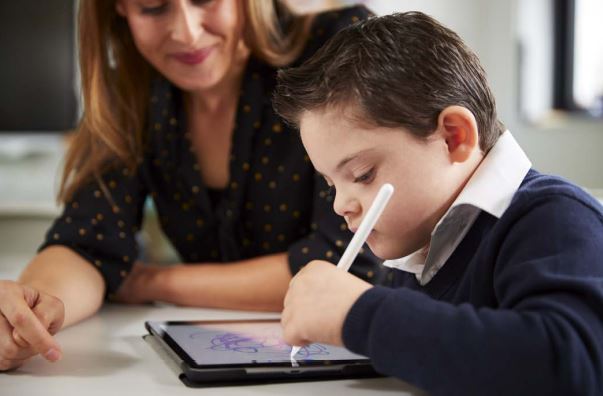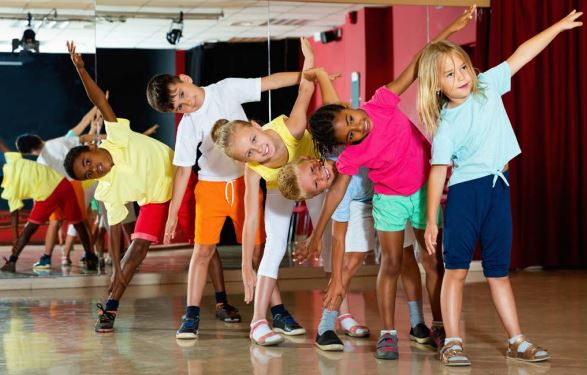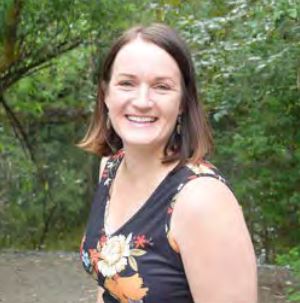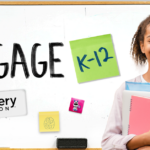Exclusive Interview with JoAnna Hunt, Head of Accessibility for Books & Retail at Amazon, originally published in the October, 2021 issue of Equity & Access
JoAnna Hunt, Head of Accessibility for Books and Retail at Amazon, leads a team of people who are working to ensure that all of Amazon’s reading, shopping and publishing experiences work effectively for people with disabilities. Her perspective on how to make significant changes – especially in educating engineers and designers – is the kind of effort that can have a lasting positive change in the work we do.
What does the term accessibility mean to you at this moment?
Accessibility means that every human being on the planet has the same opportunities and access as everyone else has to engage with society – be it access to information, to physical or digital locations, to product experiences, or to anything that they want to do. It means that physical or cognitive limitations caused by medical conditions are no longer stigmatized and societal barriers are no longer keeping these individuals from successfully living their lives. It means society really, truly creates an equal playing field for everybody.
What motivated you to do the work you do?
When I first got interested in accessibility, probably 13 or 14 years ago, I was a designer. I was handed this technical problem and I didn’t know anything about it, so I started doing research. A few months later, my four-year-old nephew was diagnosed with severe ADHD and an oppositional defiance disorder. He lived in a small town without access to the educational support that he should have had and, consequently, he struggled. A lot. That bothered me, especially because I worked in education.
About this same time, I started to more regularly meet or interact with people who had disabilities–a woman who was deaf, a gentleman who was a single-arm amputee. I saw that they were required to interact with the world in unnecessary and unnatural ways for what felt like just regular everyday activities. I worked in education and in software product design at the time and knew that technology could help make things better. That kicked off this mission for me. I wanted to work to equalize the playing field and ensure that people like my nephew and these people I kept meeting got what they needed from school. I felt like I needed to make sure that everyone had access to the same opportunities that I had.
Where do you see an example of improved accessibility, either in education or in general?
An example that I lean on when thinking about how to help people understand that accessibility is a societal problem and a design problem not a problem with any particular physical or neurological limitation, is to bring up the curb cuts in sidewalks. Curb cuts in sidewalks were created many, many years ago in Berkeley, California because a group of residents advocated for safer ways for people in wheelchairs to navigate city streets. Prior to that, a person using a wheelchair couldn’t get up onto a sidewalk or off of the sidewalk safely and had to be on the street. The solution to the problem was to create these cutaways at the beginning and end of any sidewalk. Nowadays, curb cuts are ubiquitous in urban planning. They’re used by cyclists and by moms pushing strollers. They’re used by kids riding their scooters, parents pushing strollers and professionals pulling suitcases. Those curb cuts, a design solution to an environmental accessibility problem, have created a simpler way for a lot of people, not just those in a wheelchair, to engage with sidewalks and safely navigate city streets.
When you think about how curb cuts and sidewalks were developed, it’s a model for thinking about accessibility in a digital environment. If you are aware of the need, you can plan for a curb cut at the beginning of developing a neighborhood. When you do that, the supplies that are necessary, where they should go, how you should frame and build them, and how they should function for people, are identified up front and built into the cost of creating sidewalks.
When you don’t do that kind of planning, however, then you pour the sidewalk without it and have to go back and jackhammer it out, buy more supplies, and bring in people to fix it. Then three years later it cracks because it’s not actually integrated into the whole. Eventually the whole thing has to be done all over again. Accessibility in digital environments is similar. When you’re aware of the needs of people with disabilities, for whatever it is that you’re building, and you plan for it, it’s easier and more cost effective to accomplish. Accessibility can’t be an afterthought. It has to be integrated into the core of the product.
Where do you see a discernible need for improved accessibility in education?
Accessibility in education means providing access to knowledge and information. Access to knowledge and information has proven ability to have an impact on people’s lives. With access to books, learning materials and reading opportunities, perspectives broaden and doors are opened to employment opportunities, economic stability, and other success factors leading to healthier and more equitable societies. That people are still prevented from having access to education and learning materials in todays’ technology focus feels very wrong. There’s no reason we can’t fix these problems and rethink the way we approach education.
For years, there have been conversations about competency-based learning, which focuses more on learning and building on specific concepts rather than a traditional lecture-based model of learning. The idea is to flip things around. Think about the different ways people learn–auditory, visual, kinesthetic, or multimodal—and how education can embrace all of these different learning styles by allowing individuals to learn the same competencies in different ways. Now apply that to the learning needs and differences created with various disabilities. By taking the same thinking, that everyone can learn the same thing in different ways, we open opportunities for people with all kinds of disabilities. If we don’t push everybody into a box, we are already thinking about how to make education more accessible.
Society decided that there are norms and patterns and that we should build everything for those norms. This has stopped us from celebrating what is unique and different, and encompassing those into what we believe to be “normal.”
What steps do companies need to take to make that happen?
Ultimately, it starts with learning about people’s unique needs. I have a theory that we need to shift our understanding of user experience to focus on what I call the “extremes”. People tend to focus on understanding user experience for the majority, those common and consistent use cases that everyone understands. We think about people who have different use cases, as
being edge cases. We believe they are a smaller population and thus “not our target customers.” However, when you actually dig in to understand those “edge case” customers, you realize they have all the same needs as your previously considered “majority” along with one or two other things that are unique and different to their experience.

When you start designing your experience with the needs of these customers first, you ultimately create a straightforward, easy-to-use, delightful experience for everyone. Like those curb cuts, the product will actually work for everyone.
The best steps any company can take is to start to think about these accommodations early in product ideation and design. Make a decision to be inclusive and design for the whole of the human population. It might seem difficult at first. But, focusing on these outside edges catches all of the needs of the people in the middle and, in the end, results in a much better and more equitable experience.
The technology part of design is easy because it evolves all the time. Where it becomes hard is when we don’t realize that there are these other unique needs of people who also want to interact with that technology. So, we make wrong choices early on, which makes it more complicated and expensive to fix it after the fact.
Where do you turn to look for input from the disability community?
There are advocacy organizations in the disability community that support all different segments of this population. Generally, people are willing and interested in talking about their challenges using any particular technology. While it’s a best practice to compensate individuals, who take the time to engage with you as you do research, you don’t need to rely on big expensive corporate or agency partnerships to find individuals to talk with.
Just like most customers, people with disabilities have feedback and opinions to share with companies to make the products or services they use or want to use. We often seek out customers to talk to us about shopping on Amazon, or about a new idea we have in Kindle that can help you focus more. When we do, we include people who use screen readers, or other forms of assistive technologies, or just face some of the challenges we believe our new product or feature might help to address. I find that it is really easy to ask people how they interact with any technology, and what might help them when facing any type of extra challenge created by a disability.
But when you do need organizations to work with there are a lot of great ones to choose from including the National Federation of the Blind, American Foundation for the Blind, and the Lighthouse for the Blind, National Association of the Deaf, International Dyslexia organization, and many many more. You can always find an organization that is willing to share information and help connect you with people who have feedback you might benefit from hearing.
Is there something that the general public misses when you’re talking about equity, accessibility and education technology?
I think that disability has historically been kept quiet and not normalized in our society, so the general public still has a lot of misconceptions. If people are not exposed to the totality of the human experience, including disabilities, they tend to only focus on what makes disability seem like a negative. We as a society shy away from teaching our children that it’s okay to ask questions about why a person uses a wheelchair or why someone speaks differently or looks differently, or what Down Syndrome is. Instead of shying away from it, shushing our children or telling them not to point or stare, we should be working to normalize things, to answer the questions and help them understand that some people have a different way of looking at things or doing things, and that it’s wonderful to see all of the ways people are different.
Many people haven’t been exposed to the complete normalcy of people with disabilities. There’s actually nothing they can’t do; it might just look different than other people are used to. When we start actually seeing people with disabilities as whole and capable human beings, I believe most people will start to make different choices and we can stop thinking about disability as the edge case.

How do we improve this? Is that the key to it? Or do you have something else?
Marginalized communities in today’s society are marginalized because some other societal group thought that these individuals were less capable or less valuable, which helped them to justify that it’s okay to be exclusionary. I don’t know a single designer or engineer building a product who isn’t passionate about creating an experience that works for every human on the planet. The problem is many don’t actually know what they don’t know because, as a society, we have pushed groups [who don’t fit this norm] to the side.
When it comes to technology, all of the things that need to exist for us to create more accessible products already exist. We don’t do it because we’re frequently only looking at the narrowest definition of customer needs. We need to think about how to integrate accessibility concepts into the training of designers, engineers and business people. Design schools need to cover things like color contrast, text size, and text simplicity and the impact those have on the function, not just aesthetic of what is being designed. We don’t teach engineers what it means to make accessible products, we don’t talk about the necessary code attributes and how they help support different ways of interacting, but also improve the maintainability of the code itself. Overall, there is an education component missing in some of these core training programs. If we solved that, we’d have more people designing and building accessible experiences without needing to create special roles to fix it. It would just be how things are done.
The same is true in architecture and urban planning. Thirty or forty years ago, urban planners weren’t taught to think about curb cuts and architects weren’t taught to discuss elevators, ramp access for wheelchairs, wide hallways and doorways, or counter heights. But, they are now. We fixed their training programs and set new expectations for “good quality” construction.
What about socio-emotional thoughts of students now, coming back off of the COVID experience? Is that something you address?
A lot of the technical functional limitations from a physical medical condition can exist equally for someone struggling with a mental health condition. For example, cluttered experiences are hard to navigate with a screen reader, they’re distracting for someone with ADHD, and they’re often overwhelming for anyone who is just exhausted – physically or emotionally. As students transition back to in-person school, or continue with virtual learning, or navigate some hybrid model, we need to be thinking about all of the different impacts of the past year and its effect on the mental health of our students, whether they previously identified as being disabled or not.
Research definitely shows that there has been an outsized impact of COVID complications and socio-economic, emotional and mental health impacts in the disability community. Much of that stemming from this community often being already isolated to begin with.
Any final thoughts?
I’m excited and encouraged by the shift that I’m finally starting to see in both education and technology related to accessibility. Over the last 15 years, I’ve had difficult conversations with education companies, educational institutions, and the private sector about focusing on people with disabilities. It’s starting to become more obvious that leaders in the technology industry realize how important it is to open those doors, widen our perspectives, and think about more diverse audiences.
And I think that’s very heartening to see. Don’t get me wrong, we have an incredibly long way to go and an awful lot of work ahead of us if we really are going to deliver on this promise of making a more equitable world for people with disabilities. But now it feels like maybe it’s really possible, and that it won’t take us another 20 years to get there.
JoAnna Hunt is Head of Accessibility for Books and Retail at Amazon.
The American Consortium for Equity in Education, publisher of the "Equity & Access" journal, celebrates and connects the educators, associations, community partners and industry leaders who are working to solve problems and create a more equitable environment for historically underserved pre K-12 students throughout the United States.
- American Consortium for Equity in Educationhttps://ace-ed.org/author/admin/
- American Consortium for Equity in Educationhttps://ace-ed.org/author/admin/April 23, 2025
- American Consortium for Equity in Educationhttps://ace-ed.org/author/admin/
- American Consortium for Equity in Educationhttps://ace-ed.org/author/admin/







